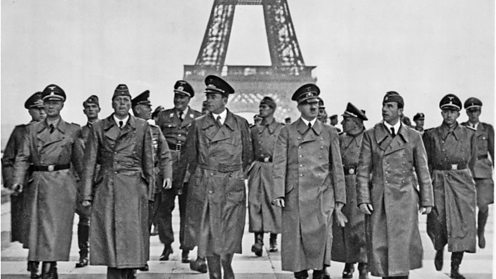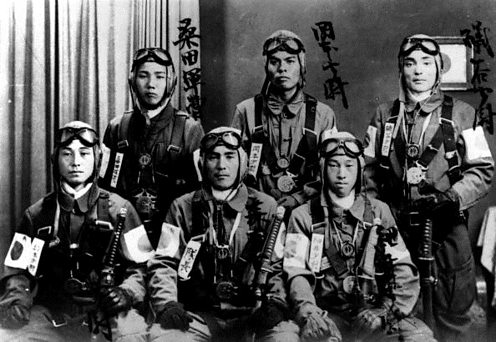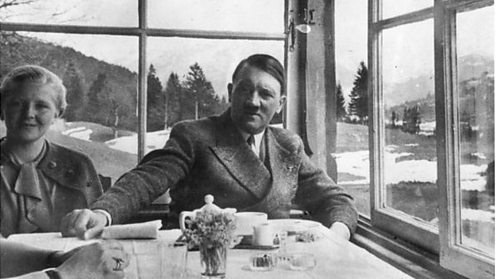MY WORLD OF TRUTH
Saturday, 9 May 2015
World War Two: History's most savage and devastating war
World War Two: History's most savage and devastating war.
In 1938, British Prime Minister Neville Chamberlain wants to ensure another European war is avoided.
With
Nazi Germany expanding its territories in Europe, Britain, France and
Germany sign the Munich Agreement, which states the Czechoslovakian
region of Sudetenland should be given to Germany and Hitler can claim no
more land. Chamberlain thinks this guarantees a way of appeasing
Hitler and he has assured “peace for our time”. But the Munich Agreement
fails to deter Hitler from his expansionist plans and in March 1939 he
invades Czechoslovakia breaking the terms of the treaty.
1 September 1939
Germany invades Poland
Unknown to the Poles, Germany has signed the Molotov-Ribbentrop Pact, with Russia agreeing to carve up Poland.
At
4.45am on 1 September 1939, the assault on Poland begins. A German
battleship opens fire on the Polish garrison in Danzig (Gdansk). It is
the first military engagement of World War Two. Simultaneously 1.5
million German troops march over the Poland border. They tear across the
country aided by 1,300 German aircraft which bombard Polish towns and
cities. On 2 September Chamberlain sends an ultimatum to Hitler: if he
does not withdraw his forces by the following day, there will be war.
3 September 1939
Britain and France declare war on Germany
Chamberlain announces that Britain is at war with Germany. Clip from A Time to Remember (BBC Four, 2010).
Britain and France have agreed to defend Poland under the terms of the 1918 Treaty of Versailles.
When
Germany refuses to withdraw, Britain and France declare war. The small
Polish army is hopelessly outdated and still has several cavalry
divisions. They put up plucky resistance for three weeks but are finally
defeated by Germany's powerful army. On 17 September, suspecting Hitler
may attack the Soviet Union, Stalin sends the Red Army to occupy
eastern Poland to protect Russian interests and gain more influence in
the region.
17 September 1939
The Phoney War

French soldiers inspect the Maginot Line.
Britain and France are now at war with Germany but for eight months Western Europe is largely peaceful.
Many
expect Germany to continue its military expansion beyond Poland, but it
delays its advance. This gives time for the British Army, made up of
around 150,000 men, to travel to France. Allied forces are put on alert,
guarding the border with Germany, Belgium and Luxembourg. The French
reinforce an impressive series of fortifications along the German
border, the Maginot Line, but crucially they do not extend it to reach
the Belgian frontier.
10 May 1940
Germany invades France
Chamberlain’s appeasement policy has failed. He resigns as prime minister on 10 May and is succeeded by Winston Churchill.
German
troops use Blitzkrieg tactics and unleash a surprise attack to storm
through the neutral Belgium, Luxembourg and the Netherlands before
crossing the border into northern France. The French, with most of their
forces on the Maginot Line further south, are outmanoeuvred and
outfought. In the ensuing battles the German Army has 150,000
casualties, but the Allies suffer more with 360,000 casualties.
Hopelessly outgunned, the British Army retreats towards the coast.
19 May 1940
The evacuation from Dunkirk
German
military success continues as they reach the coast at Abbeville in
Northern France and cut off the British Army between Lille and the sea.
Defeated
and humiliated, around 340,000 men, including 121,000 French and
Belgian soldiers, retreat north with their backs to the sea. They are no
match for the ruthless German forces and their surrender looks
inevitable. But an enormous rescue mission is undertaken to save them.
Between 26 May and 4 June a ragtag fleet, ranging from battleships to
pleasure boats braves the Channel to save the stranded soldiers. The
incredible courage of the British civilians becomes known as 'Dunkirk
spirit'.
14 June 1940
German soldiers enter Paris

Hitler with his generals in Paris.
German forces take Paris on 14 June. The French government flees, but the Prime Minister Reynaud wants to continue fighting.
However
he is quickly outvoted and forced to resign. His replacement, Marshal
Philippe Pétain, has no alternative other than to sign a humiliating
armistice with the Germans. On 22 June in Compiegne – the site of the
1918 Armistice – France is divided into an occupied section and a German
puppet state, headed by Pétain, known as Vichy France. Germany is now
the dominant power in Western Europe.
19 July 1940
Battle of Britain
With France conquered, Germany plans a knockout blow to Britain across the Channel.
Hitler wants to attack Britain in
the summer of 1940, but before he launches a ground invasion, he must
gain air superiority by destroying the Royal Air Force. In July the RAF
has only 640 fighters to combat the Luftwaffe’s 2,600 fighters and
bombers. But up step "the few". The RAF puts up an incredible fight
and, over the course of the battle, downs 1,887 German planes. The
Luftwaffe fails to dominate British skies and, by the end of October,
the threat of invasion recedes.
7 September 1940
The Blitz

A milkman delivering milk in a London street devastated during a German bombing raid.
With the Battle of Britain going badly, the Luftwaffe commander, Herman Goering, switches to bombing British cities.
43,000
civilians are killed and many wounded. In September 5,300 tonnes of
high explosives are dropped on London in just 24 nights. Tens of
thousands of city children are evacuated to the countryside. Industrial
cites and ports across the country including Birmingham, Glasgow,
Cardiff and Southampton are attacked. German bombers drop 500 tonnes of
high explosives and nearly 900 incendiary bombs on Coventry in 10 hours
devastating much of the city and all but destroying the Cathedral.
22 June 1941
Germany invades the Soviet Union.
On 22 June 1941 Germany invades the Soviet Union.
Three million German troops are supported by Italian, Hungarian, Romanian and Finnish allies.
Stalin
is taken by surprise and the Russians are forced to retreat. The
Germans use Blitzkrieg tactics and one week into the invasion the
Russians suffer 150,000 casualties. The invaders are accompanied by SS
teams, who round up and kill hundreds of thousands of Jews. By December
the Germans reach the outskirts of Moscow. But their supply lines are
stretched and Stalin is just as ruthlessly determined as Hitler. Aided
by the harsh winter, the Russian army holds the Germans at bay.
7 December 1941
Pearl Harbor

Aftermath of the attack on an air base near Pearl Harbour.
Japan, allies to Germany, bombs the American fleet moored at Pearl Harbor on the Hawaiian island of Oahu.
Japan
feels embittered by a US oil embargo imposed in August 1941 to stop its
expansionist ambitions in China. In response it launches a pre-emptive
knock out attack on the US in an attempt to destroy the Pacific fleet.
But the raid fails because Japan’s main target, three US aircraft
carriers, are at sea elsewhere and escape unscathed. Japan’s actions
waken sleeping giant and US President Roosevelt declares war on Japan
and Germany15 February 1942
Fall of Singapore

British forces surrender in Singapore.
The Imperial Japanese Army continues its expansionist ambitions by hurling itself into a series of offensives across Asia.
Japan's
next target is Singapore. With the British defensive guns pointed south
towards the sea, Japan mounts an audacious assault battling through the
jungles of Thailand and Malaya to attack from the north. After a week
of fighting, the Allied forces are running low on supplies. Around
16,000 British and 48,000 Australian and Indian troops surrender and
become prisoners of war. The fall of Singapore is seen as a great
humiliation for the British government.
23 October 1942
Battle of El Alamein
After
two years of see-saw fighting in the deserts of North Africa, Churchill
appoints Field Marshal Bernard Montgomery to command the British army.
On
23 October 1942, the British halt Germany’s march into Egypt at the
second battle of El Alamein. Germany and Italy are forced to retreat
back through Libya. It is the first major allied victory in the war and a
huge morale booster on the home front. In May 1943 German forces are
finally driven out of North Africa, ending the threat to the Suez Canal,
a major trading route, and paving the way for the invasion of Italy.
2 February 1943
Germans surrender at Stalingrad

German prisoners of war at Stalingrad.
A German offensive in August 1942 stalls and the Red Army holds on in Stalingrad until the Russian winter arrives.
It
is one of the bloodiest battles in history with nearly two million
military and civilian casualties. House-to-house fighting drags on until
2 February 1943. With food and ammunition exhausted, the German
commander Friedrich Paulus surrenders. This is a turning point in the
war, and Hitler pays the price for underestimating the sheer size and
determination of the Russian forces, which begin the long push west
towards Berlin.
9 July 1943
Allied invasion of Sicily

Italian prisoners of war in Sicily.
After their success in North Africa, Allied forces invade Sicily and Italian dictator Benito Mussolini is forced to resign.
150,000
allied troops land on Sicily where they meet little resistance from the
Italian and German troops. Legend has it the Allies are assisted by
several Mafia figures, like Lucky Luciano, who help them to win over the
Italian population. The Allies slowly advance up through Italy but are
held up by dogged German resistance. At the Battle of Monte Cassino in
southern Italy the Allies suffer 55,000 casualties and destroy an
ancient monastery in order to breakthrough to Rome.
6 June 1944
D-Day
The Soviet Union has been pressing for two years for a second front to be opened in the west.
British,
Canadian and US troops train in southern England for a year before they
are given the green light to invade. The German defences stretch over
1,000 miles from Biarritz in southern France to Denmark. They have no
idea where the allies might strike. Taking the Germans completely by
surprise, 150,000 British, Canadian and US troops land on five beaches
in Normandy. Although they sustain heavy casualties they gain a crucial
beachhead – the liberation of France begins.
27 January 1945
Liberation of Auschwitz
The Red Army liberate the Auschwitz death camp, near Krakow.
More
than one million people die at Auschwitz – the majority are Jews. The
full horrors of the Holocaust, in which the Nazis killed six million
Jewish people, as well as their murderous attacks on other ethnic
minorities and groups, are only properly comprehended by the British and
Americans when they begin to liberate concentration camps such as
Buchenwald and Bergen-Belsen in Germany in April. Horrified soldiers
find thousands of dead as well as many sick and starving prisoners.
1 April 1945
Battle of Okinawa

Kamikaze pilots pose for a photograph.
Japan's early success in the Pacific is brought to an end by the naval Battle of Midway in June 1942.
This
is a vital turning point in the war. The Japanese go on the defensive
and their empire is gradually pushed back. General MacArthur recaptures
the Philippines from the Japanese in 1944, and in March 1945 the US
overcome fanatical resistance on the island of Iwo Jima. The Battle of
Okinawa lasts for 82 days. Kamikaze pilots bombard the US ships off the
coast, while on shore thousands of Okinawan civilians kill themselves,
under pressure from Japanese army officers.
8 May 1945
Germany is defeated

Adolf Hitler with Eva Braun.
The myth of German invincibility is smashed, and the resurgent Red Army gradually roll back the Third Reich into Germany.
The
Soviets evict the Germans from Poland and send troops into Romania,
Hungary and the Balkans. Stalin is determined his troops will get to
Berlin before the British and Americans, who are advancing from the
west. As the Red Army reach Berlin, brutal fighting continues street by
street and Hitler takes his life in his bunker with his newly wed wife
Eva Braun. Nazi Germany is defeated.
6-9 August 1945
Atomic bombs dropped on Hiroshima and Nagasaki
With her allies Germany and Italy both defeated, Japan fights on without any hope of staving off a similar fate.
American
planes bomb Japanese cities with impunity. It is feared tens of
thousands of US troops – and millions of Japanese – will be killed in
the event of an invasion. Churchill and Truman demand Japan’s
unconditional surrender. When the Japanese refuse, the Americans drop
atomic bombs on Hiroshima and three days later, on Nagasaki. This
terrifying new weapon causes unprecedented death and destruction.
Emperor Hirohito surrenders and the most destructive war in history
comes to an end.
posted by Davidblogger50 at 15:51








0 Comments:
Post a Comment
<< Home